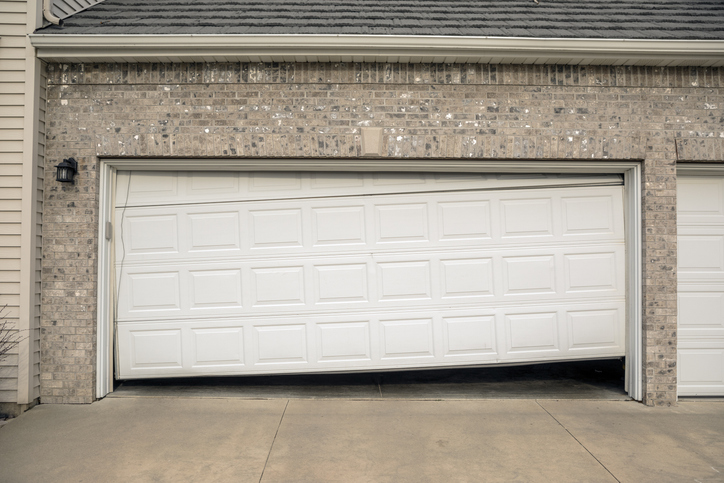Garage Door Maintenance
Reading time: 5 minutes
Signs your garage door needs maintenance
Some of the tell-tale signs may be obvious that something isn’t quite right: strange noises and unsmooth operation. But there are other things you could also look out for. Does the door look symmetrical? If not, the pulleys or cables may need some attention. Unless you know what you’re doing, it’s advised you arrange a visit from a professional garage door specialist - these heavy doors could cause a serious injury if they are in an unsafe condition.
Another thing to check is working correctly is the auto-reverse system. If your electric door is older than 20-years old, then it may not have an automatic reverse. This is a safety feature that makes the door stop and reverse when there’s an obstacle in its path. To test this, try placing something in the garage door’s path, like a piece of wood - not yourself! When the door comes down it should reach the obstacle and reverse back up - this will test the mechanical element. To test the photocell sensor, wave your arm or leg under the door when it is closing. The infrared sensors should detect something in the way and auto-reverse.
Garage door hinges, rollers and other moving parts
There are many elements to the workings of an electric garage door - springs, cables, tracks, brackets and the like, so maintaining them will stand you in good stead for a long-lasting door.
Starting a regular maintenance regime, say once every few months, of looking after the moving elements will help avoid malfunction. Take a look at what you can do to help keep your garage doors in good working order:
-
Clean the door tracks (or runners) with a cloth to remove dirt and debris build-up
-
Oil the spring mechanism for smooth operation
-
Lubricate any moving parts to aid movement and help prevent rusting
-
Oil hinges to wooden garage doors

Sagging garage doors
Over time your garage door can go through a lot of wear and tear, especially if it’s in daily use. If your garage door has the appearance of sagging on either side, it could mean that the lifting mechanism isn’t working properly, so it’s probably time to call in the professionals to take a look and possibly replace the mechanism - this should be a lot cheaper than replacing the whole door itself!
When we look at wooden garage doors, we may see signs of rot appearing - more than likely to the bottom of the door caused by wet weather.
When should I replace my garage door?
There may come a time when your garage door simply isn’t repairable any more, especially if you are facing the same issue time after time. It could mean that the door is just too old and tired to be repaired again, so it is probably safer (and more cost-effective!) to replace the whole garage door.
We mentioned wooden garage doors above and how they can be affected by rot caused by the elements. If the problem is minor you could make your own repairs by removing the rotten wood with a chisel, sealing it and then filling in the gap with a wood filler. You can easily paint over the filler to blend in with the rest of your paintwork, or go whole hog and give your wooden garage door a complete face lift with a fresh lick of paint.
If you are unsure whether your garage door needs replacing, you could always call out a garage door specialist to give it a once over before you pay out unnecessarily.
Taking care of wooden garage doors
Wooden garage doors can tend to show the signs of wear more than metal garage doors, so let’s take a look at some of the things you can do to help keep them looking their best.
-
A quick wipe down to remove any debris
-
A lick of varnish, paint or stain will help keep the wood looking good and protected from the elements
-
Keep hinges and moving parts well oiled
Most garage doors usually come with at least a 10-year guarantee, but should last much longer with regular care and maintenance. Do always consult the manufacturer's instructions and guidance on how best to maintain your garage door in case of uncertainty.
We hope you’ve found this article useful and has given you some tips on how to look after your garage doors. You will find a whole range of quality garage doors at Travis Perkins - from wooden, up-and-over to electric doors.
If you’re looking for more home maintenance advice, we’re adding new guides all the time so, come back for more updates.
Disclaimer: The information contained on this page is intended as an overall introduction and is not intended as specific advice from a qualified professional. Travis Perkins aims to avoid, but accepts no liability, in the case that any information stated is out of date.





